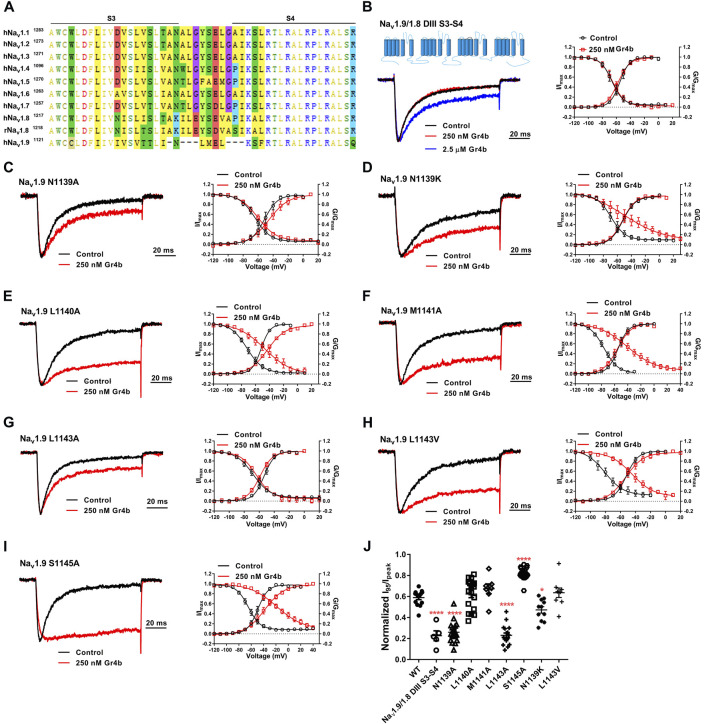FIGURE 6.
DIII S3-S4 of Nav1.9 is involved in interacting with Gr4b. (A) Sequence alignments corresponding to Nav subtype domains III (DIII) S3-S4. (B) Representative normalized current traces, voltage-dependent steady-state activation and voltage-dependent steady-state inactivation show that the chimera channels (constructed as the cartoon illustrated) Nav1.9/1.8 DIII S3-S4, in the absence (black), presence of 250 nM Gr4b (red) or 2.5 μM Gr4b (blue). (C–I) Representative traces, voltage-dependent steady-state activation and voltage-dependent steady-state inactivation show that the single point mutations of Nav1.9, in the absence (black) and presence of 250 nM Gr4b (red). (J) Effects of Gr4b on WT and mutant Nav1.9 channels. Dot plots display the effect of 250 nM Gr4b on the persistent current (n = 17 for N1139A, n = 11 for N1139K, n = 18 for L1140A and L1143A, n = 7 for M1141A, n = 9 for L1143V, n = 20 for S1145A and n = 5 for Nav1.9/1.8 DIII S3-S4). One-way ANOVA with Dunnett’s Multiple Comparison Test and compared with WT, * p < 0.05, **** p < 0.0001.

